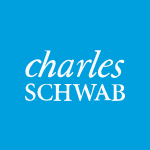Charles Schwab Q4 2022 Earnings Report
Key Takeaways
Charles Schwab reported a strong Q4 2022, with net income reaching $2.0 billion, a 25% increase year-over-year. Earnings per share also saw a significant rise, climbing to $0.97. The company's success was underpinned by a 17% increase in net revenues, which totaled $5.5 billion.
Net income for Q4 2022 increased by 25% to $2.0 billion compared to Q4 2021.
Earnings per share (EPS) rose to $0.97, a 28% increase from $0.76 in Q4 2021.
Net revenues for Q4 2022 grew by 17% to $5.5 billion compared to $4.7 billion in Q4 2021.
The company added over 4 million new brokerage accounts, bringing the total to nearly 34 million.
Revenue by Segment
Forward Guidance
Management provided forward guidance, outlining both positive and negative factors expected to influence the company's performance.
Positive Outlook
- Ongoing preparations for the largest broker-dealer integration in our industry’s history
- Further empower investors with more personalization options
- Increased access to high-quality products
- Evolved suite of tools and solutions
- Leading value proposition to RIAs by expanding our institutional no transaction fee mutual fund platform
Challenges Ahead
- Emerging concerns around inflation and global market stability became reality, with Russia’s invasion of Ukraine exacerbating the impact.
- Equity markets suffered their worst year since 2008
- The Federal Reserve tightened short-term rates at the fastest pace in 40 years
- Uncertainty around future economic growth increased during the back half of the year, weighing on longer-term rates and leading to an inverted yield curve.
Revenue & Expenses
Visualization of income flow from segment revenue to net income
Historical Earnings Impact
Analyze how earnings announcements historically affect stock price performance

